#saint seiriol
Text
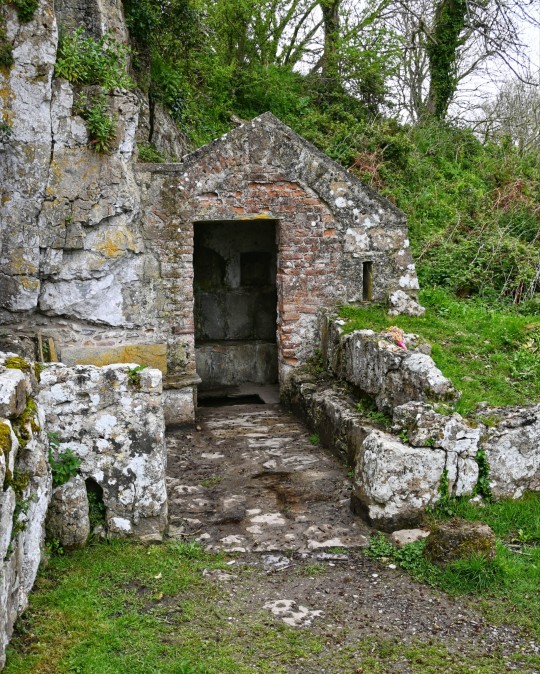


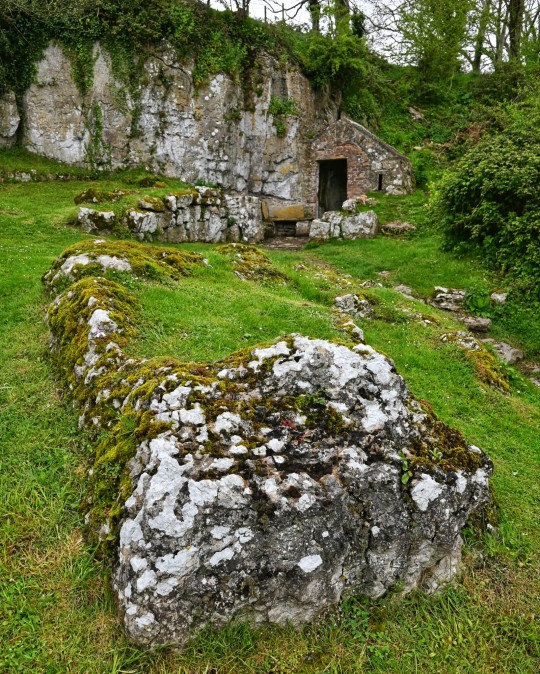
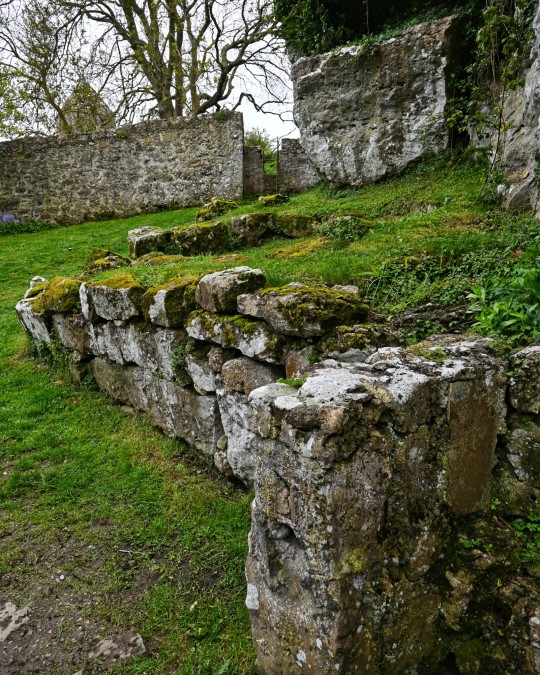


St. Seiriol's Ancient Well, Penmon, Anglesey, Wales
#ancient well#ancient craft#archaeology#early religion#early belief#wellspring#hermitage#wales#Anglesey#stonework#saint seiriol
198 notes
·
View notes
Text
8th November
St Cybi’s Day
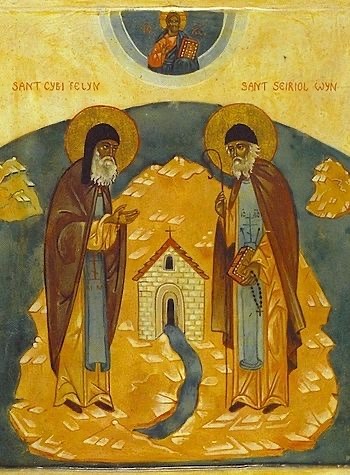
Icon of SS Seiriol and Cybi of Wales. Source: Orthodox Christianity website
Today is St Cybi’s Day. Cybi of the Tawney Hue and St Seiriol the Fair were both holy men and best friends. They lived on Anglesey in different parts of the island but each day travelled to meet each other halfway to, well, hang out. They obtained their peculiar nicknames because on their walks to see each other, Cybi strode forth with the sun burning his face, while Seiriol had to put up with it shining on his back. Cybi eventually took up residence on a small island just to the north west of Anglesey which, because of his righteousness and piety became known as Holy Island.
St Cybi’s Well is at Llangybi near Porthmadog in Gwynedd. It was a famous curative well full of eels which, if you had a leg complaint and you were lucky enough to have the eels wrap themselves around your limb, you would instantly be cured.
0 notes
Text
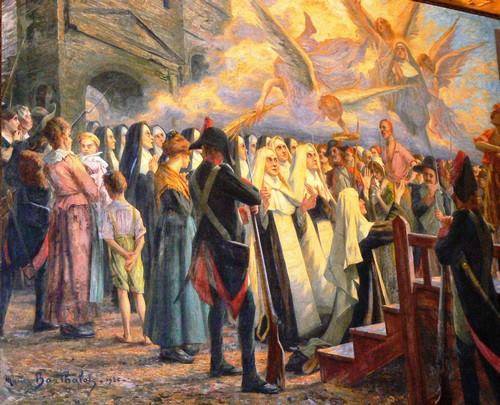
SAINTS FOR FEBRUARY 01
St. Seiriol, 6th century. Welsh monk and hermit, He is honored on Puffin Island (island of Ynys-Seiriol), off the coast of Anglesey, Wales. Other details of his life are scarce.
Martyrs of the French Revolution February 01
Bl. Anne Hmard, Bl. Anne-Francoise de Villeneuve, Bl. Catherine Cottenceau, Bl. Francoise Bonneau, Bl. Francoise Michau, Bl. Francoise Pagis Roulleau, Bl. Gabrielle Androuin, Bl. Jeanne Bourigault Bl. Jeanne Fouchard Chalonneau, Bl. Jeanne Gruget Doly, Bl. Jeanne-Marie Sailland d'Epinatz, Bl. Louise Rallier de la Tertiniere Dean de Luigne, Bl. Louise-Aimee Dean de Luigne, Bl. Madeleine Blond, Bl. Madeleine Cady, Bl. Madeleine Perrotin Rousseau, Bl. Madeleine Sailland d'Epinatz, Bl. Madeleine Salle, Bl. Marguerite Riviere Huau, Bl. Marguerite Robin, Bl. Marie Cassin, Bl. Marie Grillard, Bl. Marie Lenee Lepage Varance, Bl. Marie Leroy Brevet, Bl. Marie Pichery Delahaye, Bl. Marie Roualt Bouju, Bl. Marie-Genevieve Poulain de la Forestrie, Bl. Marie-Jeanne Chauvigne Rorteau, Bl. Marthe Poulain de la Forestrie, Bl. Marie-Jeanne Chauvigne Rorteau, Bl. Marthe Poulain de la Forestrie, Bl. Perrine Androuin, Bl. Perrine Besson, Bl. Perrine Bourigault, Bl. Perrine Grille, Bl. Perrine Laurent, Bl. Perrine Ledoyen, Bl. Perrine Phelyppeaux Sailland, Bl. Perrine-Jeanne Sailland d'Epinatz, Bl. Perrine-Renee Potier Turpault, Bl. Renee Grillard, Bl. Renee Marie Feillatreau, Bl. Renee Martin, Bl. Renee Regault Papin, Bl. Renee Seichet Dacy, Bl. Renee Valin, Bl. Rose Quenion, Bl. Simone Chauvigne Charbonneau, Bl. Suzanne Androuin, Bl. Victoire Bauduceau Reveillere, Feb. 1 Pierre Tessier was a Roman Catholic layman and a martyr
B. LUDOVICA ALBERTONI, ROMAN WIDOW
St. Brigid of Ireland. Brigid was probably born at Faughart near Dundalk, Louth, Ireland. Her parents were baptized by St. Patrick, with whom she developed a close friendship. According to legend, her father was Dubhthach, an Irish chieftain of Lienster, and her mother, Brocca, was a slave at his court. Even as a young girl she evinced an interest for a religious life and took the veil in her youth from St. Macaille at Croghan and probably was professed by St. Mel of Armagh, who is believed to have conferred abbatial authority on her. She settled with seven of her virgins at the foot of Croghan Hill for a time and about the year 468, followed Mel to Meath. About the year 470 she founded a double monastery at Cill-Dara (Kildare) and was Abbess of the convent, the first in Ireland. The foundation developed into a center of learning and spirituality, and around it grew up the Cathedral city of Kildare. She founded a school of art at Kildare and its illuminated manuscripts became famous, notably the Book of Kildare, which was praised as one of the finest of all illuminated Irish manuscripts before its disappearance three centuries ago. Brigid was one of the most remarkable women of her times, and despite the numerous legendary, extravagant, and even fantastic miracles attributed to her, there is no doubt that her extraordinary spirituality, boundless charity, and compassion for those in distress were real. She died at Kildare on February 1. The Mary of the Gael, she is buried at Downpatrick with St. Columba and St. Patrick, with whom she is the patron of Ireland. Her name is sometimes Bridget and Bride.
St. Cinnia, 5th century. A princess of Ulster, Ireland. She was converted to Christianity by St. Patrick. When she entered a convent, St. Patrick gave her the veil.
St. Crewanna, 5th century. A confessor who accompanied St. Breaca from Ireland to Cornwall, England. Crowan near St. Erth is believed to have been named in his honor.
St. Darulagdach, 524 A.D. Abbess of Kildare, Ireland, the successor of St. Brigid. She is also called Dardulacha.
St. Jarlath, 480 A.D. Also called Hierlath, Irish bishop and disciple of St. Patrick. He became bishop of Armagh and aided monastic expansion and the missionary program undertaken in that era.
St. Kinnin, 5th century. Irish maiden baptized by St. Patrick. She is venerated in County Louth, Ireland.
0 notes
Text
I just wanted you all to know that when Henry Tudor was just a year old a Welsh poet, Dafydd Nanmor, wrote a poem invoking all—I mean, all—of the Welsh saints to protect him, plus additional, non-Welsh ones. These are the saints he asks to protect the child (in order of appearance):
St Benedict and St Bernard, St Dyrnog, St Brothen and St Sulien and St Silin, St Buan, St Celynnin, St Beuno of Clynnog, St Cynin and his servants, St Cynan, St Asaph, St Cawrdaf, kinsman of Eudaf son of Caradog, St Collen, St Elian, St Cynwyd, Cynfelyn, St Cedwyn and St Cadog, St Cadfan and St Dyfnan, St Ust and St Dyfnig, St Caron and St Curig, St Patrick, St Pedrog, St Peris, St Cristiolus, St Dennis, St Dwynwen, St Peter, St John, St Gwynnen, St Padarn, St Gwynnog, St Fagan, bishop St Afan, Ifor, St Gregory, St George, St Môr and St Mwrog, St Clare, St Ilar, St Cynddylig, St Dominic, St Peblig, St Meilig, St Maelog,
—(I’m not done)—
St Dochwyn and St Tecwyn, and St Tygwy, St Dochdwy, St Winifred and St Tyfrïog, St Derfel and St Dwyfel and St Gredifel, St Dogmael, St Daniel and St Dwynog, St Deiniol and St Seiriol and St Saeran, Dardanus, St Stephen, St Cynan, St Cynog, St Deiniolen, Llawdden, St Cathen, St Ceitho, St David of Mynyw, St Dyfaenog, St Tybïe, St Einion and St Non, St Tegla, St Agatha, St Anna, St Enoch, St Tanwg and St Trinio, St James, St Egwad, St Tysilio, St Lleuddad, St Tysul, St Llawddog, St Lawrence, St Mark and St Richard, St Luke, St Lambert, St Edward and St Tyfrydog, and St Tydecho, St Teilo and St Telyddog.
Nanmor also asks Mary, Gabriel, Sariel, Thomas, Uriel, Michael and Rhiniel to “allow Henry to grow old for a long time”. This is the same poet that prophesised that Henry Tudor would be king but died before he could see it happen.
#when you remember the welsh age of saints was a thing#henry vii#dailytudors#artist: dafydd nanmor#poor nanmor he just liked this child so much
397 notes
·
View notes
Photo

‘Seiriol Wyn’ - Coming to meet Saint Cybi from the opposite end of Anglesey, Seiriol’s face was in the shade both going and returning from the meeting, so he was named Seiriol the Pale, Seiriol Wyn. This #mosaic faces the Cybi Felyn panel at #holyhead #celticgatewaybridge - #mosaics #earlymedieval #historyofwales #cymru #smalti #publicart (at Holyhead)
2 notes
·
View notes
Note
So this may be a random question but you are the only person I can think to ask. I'm looking for information on early 6th century Welsh architecture. Do you happen to know anywhere I can look for references? I've tried search engines and even a few libraries and book stores and I don't think I'm looking in the correct place. Thank you.
You are looking for information about a time in history where Wales society was composed of separate kingdoms, like Gwynedd and Powys. The Romans had just left and tribe fighting was rampant for control of the lands. Some call this time Post-Roman Wales and the Age of the Saints but few architectural works remain from that time.
tumblrverse, any information would be welcomed!

St Seiriol’s Well
51 notes
·
View notes
Text
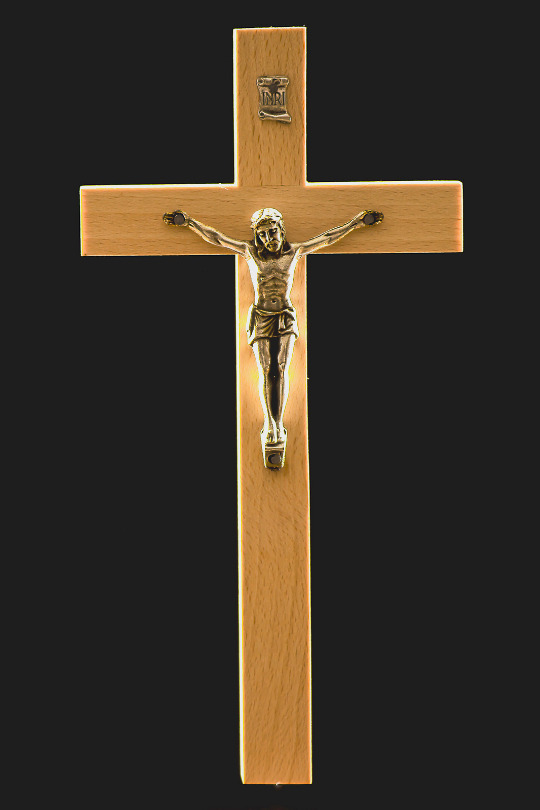
SAINTS NOVEMBER 10
St. John of Ratzeburg, 1066 A.D. Martyred Scottish bishop. Born in Scotland, John became a missionary in Germany. Named the bishop of Ratzeburg, he labored on the coast of the Baltic Sea where he was martyred for the faith by local pagans.
St. Justus of Canterbury, 627 A.D. Benedictine archbishop of Canterbury. Justus was a Roman sent by Pope St. Gregory I the Great in 601 to England, to evangelize the Anglo-Saxons. Justus and others were sent as aides to St. Augustine. In 604, Justus was consecrated the first bishop of Rochester. The death of King Ethelbert in 616 caused a rise in paganism, and Justus returned to Rome. In the following year he went back to England and became archbishop of Canterbury in 624. He consecrated St. Paulinus.
St. Elaeth, 1084 A.D. British king driven by locals into Wales. He became a monk there under St. Seiriol. Elaeth’s poems have survived.
St. Aedh MacBricc, 589 A.D. Miracle worker and founder who reputedly cured St. Brigid of a headache. Aedh was the son of Bricc, or Breece, of the Hy Neill. He was robbed of his inheritance by his brother and came under the influence of bishop Illathan of Rathlihen, Offay. Admitted into the monastic life, Aedh founded a religious community in Westmeath. He is listed in some records as a bishop.
St. Theoctiste of Lesbos, Roman Catholic Nun and hermitess. According to tradition, she lived on the island of Lesbos in the Aegean Sea before being kidnapped by Arab raiders. They took her to the island of Paros where she escaped and lived thereafter for thirty years as a herrmitess. Discovered one day by a hunter named Simon, she begged him to return when he could with Holy Communion, a plea he fulfilled a year later after which she soon died. Nov 10
ST. ANDREW AVELLINO, THEATINE, PRIEST
St. Leo the Great, Pope Leo I (c. 400 – 10 November 461), also known as Saint Leo the Great, was the head of the Catholic Church from 29 September 440 to his death in 461. Benedict XVI has called Pope St Leo the Great “one of the greatest Popes who have honoured the Roman See. Leo lived in the fifth century, and is known to history for his role in calling the Council of Chalcedon, and for having forestalled Attila the Hun’s invasion of Italy.
https://www.vaticannews.va/en/saints/11/10/st--leo-the-great--pope-and-doctor-of-the-church.html
1 note
·
View note
Text
St Cybi and St Elizabeth of the Trinity https://www.indcatholicnews.com/saint/318
0 notes
Text
SAINTS FOR FEBRUARY 01
St. Seiriol, 6th century. Welsh monk and hermit, He is honored on Puffin Island (island of Ynys-Seiriol), off the coast of Anglesey, Wales. Other details of his life are scarce.
B. LUDOVICA ALBERTONI, ROMAN WIDOW
St. Brigid of Ireland. Brigid was probably born at Faughart near Dundalk, Louth, Ireland. Her parents were baptized by St. Patrick, with whom she developed a close friendship. According to legend, her father was Dubhthach, an Irish chieftain of Lienster, and her mother, Brocca, was a slave at his court. Even as a young girl she evinced an interest for a religious life and took the veil in her youth from St. Macaille at Croghan and probably was professed by St. Mel of Armagh, who is believed to have conferred abbatial authority on her. She settled with seven of her virgins at the foot of Croghan Hill for a time and about the year 468, followed Mel to Meath. About the year 470 she founded a double monastery at Cill-Dara (Kildare) and was Abbess of the convent, the first in Ireland. The foundation developed into a center of learning and spirituality, and around it grew up the Cathedral city of Kildare. She founded a school of art at Kildare and its illuminated manuscripts became famous, notably the Book of Kildare, which was praised as one of the finest of all illuminated Irish manuscripts before its disappearance three centuries ago. Brigid was one of the most remarkable women of her times, and despite the numerous legendary, extravagant, and even fantastic miracles attributed to her, there is no doubt that her extraordinary spirituality, boundless charity, and compassion for those in distress were real. She died at Kildare on February 1. The Mary of the Gael, she is buried at Downpatrick with St. Columba and St. Patrick, with whom she is the patron of Ireland. Her name is sometimes Bridget and Bride.
St. Cinnia, 5th century. A princess of Ulster, Ireland. She was converted to Christianity by St. Patrick. When she entered a convent, St. Patrick gave her the veil.
St. Crewanna, 5th century. A confessor who accompanied St. Breaca from Ireland to Cornwall, England. Crowan near St. Erth is believed to have been named in his honor.
St. Darulagdach, 524 A.D. Abbess of Kildare, Ireland, the successor of St. Brigid. She is also called Dardulacha.
St. Jarlath, 480 A.D. Also called Hierlath, Irish bishop and disciple of St. Patrick. He became bishop of Armagh and aided monastic expansion and the missionary program undertaken in that era.
St. Kinnin, 5th century. Irish maiden baptized by St. Patrick. She is venerated in County Louth, Ireland.
0 notes
Text
SAINTS NOVEMBER 10
St. Justus of Canterbury, 627 A.D. Benedictine archbishop of Canterbury. Justus was a Roman sent by Pope St. Gregory I the Great in 601 to England, to evangelize the Anglo-Saxons. Justus and others were sent as aides to St. Augustine. In 604, Justus was consecrated the first bishop of Rochester. The death of King Ethelbert in 616 caused a rise in paganism, and Justus returned to Rome. In the following year he went back to England and became archbishop of Canterbury in 624. He consecrated St. Paulinus.
St. Elaeth, 1084 A.D. British king driven by locals into Wales. He became a monk there under St. Seiriol. Elaeth’s poems have survived.
St. John of Ratzeburg, 1066 A.D. Martyred Scottish bishop. Born in Scotland, John became a missionary in Germany. Named the bishop of Ratzeburg, he labored on the coast of the Baltic Sea where he was martyred for the faith by local pagans.
St. Aedh MacBricc, 589 A.D. Miracle worker and founder who reputedly cured St. Brigid of a headache. Aedh was the son of Bricc, or Breece, of the Hy Neill. He was robbed of his inheritance by his brother and came under the influence of bishop Illathan of Rathlihen, Offay. Admitted into the monastic life, Aedh founded a religious community in Westmeath. He is listed in some records as a bishop.
St. Theoctiste of Lesbos, Roman Catholic Nun and hermitess. According to tradition, she lived on the island of Lesbos in the Aegean Sea before being kidnapped by Arab raiders. They took her to the island of Paros where she escaped and lived thereafter for thirty years as a herrmitess. Discovered one day by a hunter named Simon, she begged him to return when he could with Holy Communion, a plea he fulfilled a year later after which she soon died. Nov 10
ST. ANDREW AVELLINO, THEATINE, PRIEST
0 notes
Text




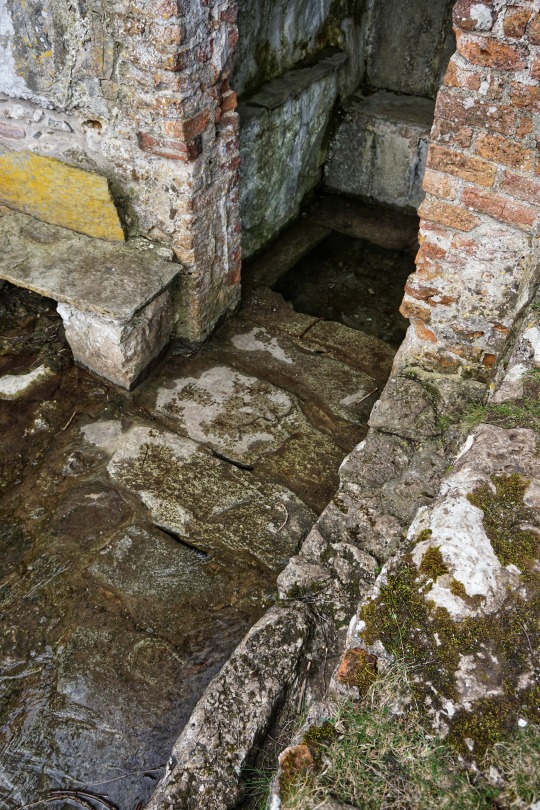


St. Seiriol's Well, a 6th century CE well named after a celtic saint, Penmon Priory, Penmon Point, Anglesey, North Wales, 21.3.20.
#Celtic#celt#well#ancient culture#ancient world#ancient history#early christianity#Penmon Priory#Anglesey#north wales#creative#education#cross arts#cross curricular#community#identity#belonging#early religion#archaeology
464 notes
·
View notes
Text
SAINTS NOVEMBER 10
St. Aedh MacBricc, 589 A.D. Miracle worker and founder who reputedly cured St. Brigid of a headache. Aedh was the son of Bricc, or Breece, of the Hy Neill. He was robbed of his inheritance by his brother and came under the influence of bishop Illathan of Rathlihen, Offay. Admitted into the monastic life, Aedh founded a religious community in Westmeath. He is listed in some records as a bishop.
St. Elaeth, 1084 A.D. British king driven by locals into Wales. He became a monk there under St. Seiriol. Elaeth’s poems have survived.
St. John of Ratzeburg, 1066 A.D. Martyred Scottish bishop. Born in Scotland, John became a missionary in Germany. Named the bishop of Ratzeburg, he labored on the coast of the Baltic Sea where he was martyred for the faith by local pagans.
St. Justus of Canterbury, 627 A.D. Benedictine archbishop of Canterbury. Justus was a Roman sent by Pope St. Gregory I the Great in 601 to England, to evangelize the Anglo-Saxons. Justus and others were sent as aides to St. Augustine. In 604, Justus was consecrated the first bishop of Rochester. The death of King Ethelbert in 616 caused a rise in paganism, and Justus returned to Rome. In the following year he went back to England and became archbishop of Canterbury in 624. He consecrated St. Paulinus.
St. Leo the Great, Pope Leo I (c. 400 – 10 November 461), also known as Saint Leo the Great, was the head of the Catholic Church from 29 September 440 to his death in 461. Feastday: November 10
St. Theoctiste of Lesbos, Roman Catholic Nun and hermitess. According to tradition, she lived on the island of Lesbos in the Aegean Sea before being kidnapped by Arab raiders. They took her to the island of Paros where she escaped and lived thereafter for thirty years as a herrmitess. Discovered one day by a hunter named Simon, she begged him to return when he could with Holy Communion, a plea he fulfilled a year later after which she soon died. Nov 10
0 notes
Quote
ENGLISH SPEAKING SAINTS, FEB. 1. St. Brigid of Ireland,The Mary of the Gael, she is buried at Downpatrick with St. Columba and St. Patrick, with whom she is the patron of Ireland. Her name is sometimes Bridget and Bride.
St. Seiriol, 6th century. Welsh monk and hermit, He is honored on Puffin Island (island of Ynys-Seiriol), off the coast of Anglesey, Wales. Other details of his life are scarce.
St. Cinnia, 5th century. A princess of Ulster, Ireland. She was converted to Christianity by St. Patrick. When she entered a convent, St. Patrick gave her the veil.
St. Crewanna, 5th century. A confessor who accompanied St. Breaca from Ireland to Cornwall, England. Crowan near St. Erth is believed to have been named in his honor.
St. Darulagdach, 524 A.D. Abbess of Kildare, Ireland, the successor of St. Brigid. She is also called Dardulacha.
St. Jarlath, 480 A.D. Also called Hierlath, Irish bishop and disciple of St. Patrick. He became bishop of Armagh and aided monastic expansion and the missionary program undertaken in that era.
St. Kinnin, 5th century. Irish maiden baptized by St. Patrick. She is venerated in County Louth, Ireland.
0 notes
Photo

ENGLISH SPEAKING SAINTS NOVEMBER 10
St. Aedh MacBricc, 589 A.D. Miracle worker and founder who reputedly cured St. Brigid of a headache. Aedh was the son of Bricc, or Breece, of the Hy Neill. He was robbed of his inheritance by his brother and came under the influence of bishop Illathan of Rathlihen, Offay. Admitted into the monastic life, Aedh founded a religious community in Westmeath. He is listed in some records as a bishop.
St. Elaeth, 1084 A.D. British king driven by locals into Wales. He became a monk there under St. Seiriol. Elaeth’s poems have survived.
St. John of Ratzeburg, 1066 A.D. Martyred Scottish bishop. Born in Scotland, John became a missionary in Germany. Named the bishop of Ratzeburg, he labored on the coast of the Baltic Sea where he was martyred for the faith by local pagans.
St. Justus of Canterbury, 627 A.D. Benedictine archbishop of Canterbury. Justus was a Roman sent by Pope St. Gregory I the Great in 601 to England, to evangelize the Anglo-Saxons. Justus and others were sent as aides to St. Augustine. In 604, Justus was consecrated the first bishop of Rochester. The death of King Ethelbert in 616 caused a rise in paganism, and Justus returned to Rome. In the following year he went back to England and became archbishop of Canterbury in 624. He consecrated St. Paulinus.
0 notes
Quote
ENGLISH SPEAKING SAINTS, FEB. 1. St. Brigid of Ireland,The Mary of the Gael, she is buried at Downpatrick with St. Columba and St. Patrick, with whom she is the patron of Ireland. Her name is sometimes Bridget and Bride.
St. Seiriol, 6th century. Welsh monk and hermit, He is honored on Puffin Island (island of Ynys-Seiriol), off the coast of Anglesey, Wales. Other details of his life are scarce.
St. Cinnia, 5th century. A princess of Ulster, Ireland. She was converted to Christianity by St. Patrick. When she entered a convent, St. Patrick gave her the veil.
St. Crewanna, 5th century. A confessor who accompanied St. Breaca from Ireland to Cornwall, England. Crowan near St. Erth is believed to have been named in his honor.
St. Darulagdach, 524 A.D. Abbess of Kildare, Ireland, the successor of St. Brigid. She is also called Dardulacha.
St. Jarlath, 480 A.D. Also called Hierlath, Irish bishop and disciple of St. Patrick. He became bishop of Armagh and aided monastic expansion and the missionary program undertaken in that era.
St. Kinnin, 5th century. Irish maiden baptized by St. Patrick. She is venerated in County Louth, Ireland.
0 notes
Quote
ENGLISH SPEAKING SAINTS, FEB. 1. St. Brigid of Ireland,The Mary of the Gael, she is buried at Downpatrick with St. Columba and St. Patrick, with whom she is the patron of Ireland. Her name is sometimes Bridget and Bride.
St. Seiriol, 6th century. Welsh monk and hermit, He is honored on Puffin Island (island of Ynys-Seiriol), off the coast of Anglesey, Wales. Other details of his life are scarce.
St. Cinnia, 5th century. A princess of Ulster, Ireland. She was converted to Christianity by St. Patrick. When she entered a convent, St. Patrick gave her the veil.
St. Crewanna, 5th century. A confessor who accompanied St. Breaca from Ireland to Cornwall, England. Crowan near St. Erth is believed to have been named in his honor.
St. Darulagdach, 524 A.D. Abbess of Kildare, Ireland, the successor of St. Brigid. She is also called Dardulacha.
St. Jarlath, 480 A.D. Also called Hierlath, Irish bishop and disciple of St. Patrick. He became bishop of Armagh and aided monastic expansion and the missionary program undertaken in that era.
St. Kinnin, 5th century. Irish maiden baptized by St. Patrick. She is venerated in County Louth, Ireland.
0 notes